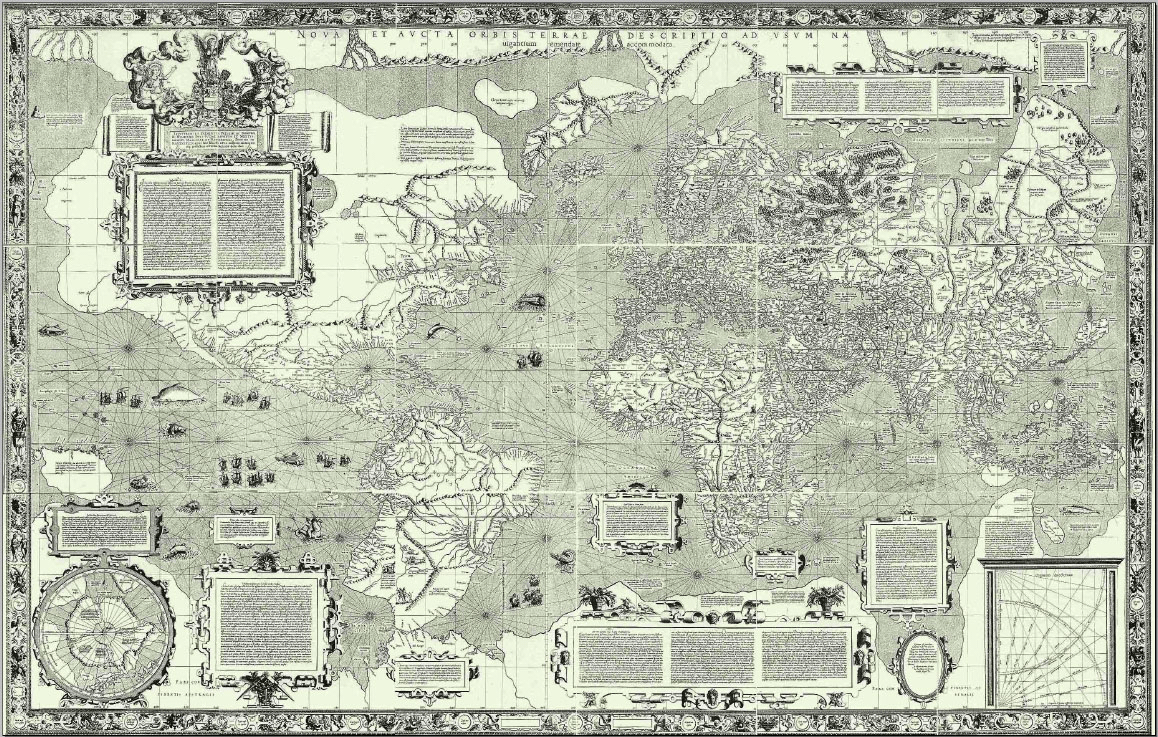| caecelia_ ( @ 2012-01-20 18:56:00 |
|
|
|||
|
|
|
|
|
|
|
Reading Donne is very enlightening. My attention has been drawn to his use of the term "oblique" and its origins in navigation and cartography. In the baroque period, it was assumed that there were three ways to navigate a ship: in a straight line, on a tangential, 'oblique' course (complicated to explain, but it was thought that one was still moving in a series of lines) or in a "Great Circle". The "oblique" course was hardly a tangential, however, but in reality a spiral-like movement.
From the perspective of ancient aesthetics, mathematics, philosophy, spirals were a crude sort of shape, a distortion of the perfect geometry of lines and circles.
Navigators, being pragmatic men, simply ignored the paradox of straight lines that were in fact spirals. Cartographers, on the other hand, were faced with the paradox whenever they translated spherical representations onto two-dimensional maps. The Mercator map, which corrected distortions to the meridians by introducing distortion upon distortion upon distortion at the poles, is a famous example:

Theologians such as Donne picked up on these semantics and described man's path as a spiral between the straight line of the sinner and the perfect circle of the angels and God (in truth, the idea of man's motion as that of a spiral goes back to Plato, but let's ignore that for now.) I don't particularly wish to go there, but I like the idea of the paradox and of distortion and the kind of incomprehension felt by men at learning that perceived straight lines were in fact not so straight at all. Possibly a good metaphor/conceit for characters in HP, what do you think?
This entry was originally posted at dreamwidth. There are
